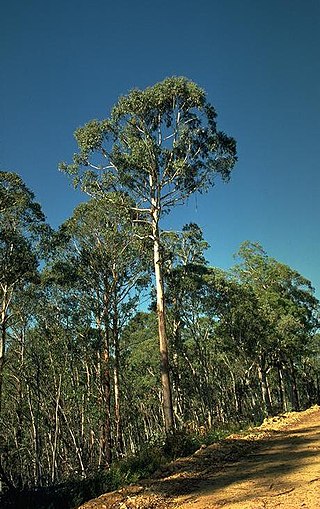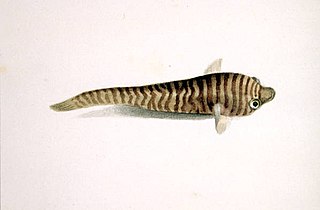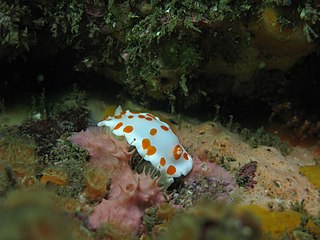
The International Union for Conservation of Nature (IUCN) is an international organization working in the field of nature conservation and sustainable use of natural resources. Founded in 1948, IUCN has become the global authority on the status of the natural world and the measures needed to safeguard it. It is involved in data gathering and analysis, research, field projects, advocacy, and education. IUCN's mission is to "influence, encourage and assist societies throughout the world to conserve nature and to ensure that any use of natural resources is equitable and ecologically sustainable".

The International Union for Conservation of Nature (IUCN) Red List of Threatened Species, also known as the IUCN Red List or Red Data Book, founded in 1964, is an inventory of the global conservation status and extinction risk of biological species. A series of Regional Red Lists, which assess the risk of extinction to species within a political management unit, are also produced by countries and organizations.

The eastern grey kangaroo is a marsupial found in the eastern third of Australia, with a population of several million. It is also known as the great grey kangaroo and the forester kangaroo. Although a big eastern grey male can typically weigh up to 66 kg (146 lb) and have a length of well over 2 m, the scientific name, Macropus giganteus, is misleading: the red kangaroo of the semi-arid inland is larger, weighing up to 90 kg (200 lb).

Eucalyptus delegatensis, commonly known as alpine ash, gum-topped stringybark, white-top and in Victoria as woollybutt, is a species of tree that is endemic to southeastern Australia. It has a straight trunk with rough, fibrous to stringy bark on the lower half of the trunk, smooth white bark above, lance-shaped to curved adult leaves, flower buds in groups of between seven and fifteen, white flowers and barrel-shaped or hemispherical fruit.

The spotted grass frog or spotted marsh frog is a terrestrial frog native to Australia. It is distributed throughout all of New South Wales and Victoria, eastern South Australia, the majority of Queensland, and eastern Tasmania. It is also naturalised in Western Australia, having been unintentionally introduced at Kununurra in the 1970s, apparently during the relocation of several hundred transportable homes from Adelaide.

The Blephariceridae, commonly known as net-winged midges, are a nematoceran family in the order Diptera. The adults resemble crane flies except with a projecting anal angle in the wings, and different head shape, absence of the V on the mesonotum, and more laterally outstretched, forward-facing legs. They are uncommon, but dozens of genera occur worldwide, and over 200 species.

The Tasmanian froglet is a species of ground-dwelling frog that occurs only in Tasmania, Australia.

The long-thumbed frog, Fletcher's frog or barking marsh frog is a species of non-burrowing ground frog native to south-eastern Australia. The species belongs to the genus Limnodynastes. The twelve species in the genus are characterised by a lack of toe pads. Following phylogenetic analysis, the species was placed in L. peronii clade group alongside L. depressus, L.tasmaniensis and L. peronii.

An IUCN Red List Critically Endangered species is one that has been categorized by the International Union for Conservation of Nature as facing an extremely high risk of extinction in the wild. As of December 2023, of the 157,190 species currently on the IUCN Red List, 9,760 of those are listed as Critically Endangered, with 1,302 being possibly extinct and 67 possibly extinct in the wild.

The marbled frog or marbled marsh frog is a species of ground-dwelling frog native to northern and north-eastern Australia, and southern New Guinea in both Indonesia and Papua New Guinea.

The Tasmanian clingfish is a clingfish of the family Gobiesocidae, found around the western and southern coasts of Australia including Tasmania. Its length is up to 8 cm. This species is found in shallow, coastal, rocky reefs and in the intertidal zone. It is also encountered by scuba divers beneath piers and jetties.

A data deficient (DD) species is one which has been categorized by the International Union for Conservation of Nature (IUCN) as offering insufficient information for a proper assessment of conservation status to be made. This does not necessarily indicate that the species has not been extensively studied, but it usually indicates that little or no information is available on the abundance and distribution of the species. It can also indicate uncertainty about the taxonomic classification of an organism; for example, the IUCN classifies the orca as "data deficient" because of the likelihood that two or more types of the whale are separate species.

Rüppell's or the greater broad-nosed bat is a species of vespertilionid microbat found in eastern Australia.
The western false pipistrelle, species Falsistrellus mackenziei, is a vespertilionid bat that occurs in Southwest Australia. The population is declining due to loss of its habitat, old growth in tall eucalypt forest which has largely been clear felled for tree plantations, wheat cultivation and urbanisation. Although it is one of the largest Australian bats of the family, the species was not recorded or described until the early 1960s. A darkly colored bat with reddish brown fur and prominent ears, they fly rapidly around the upper canopy of trees in pursuit of flying insects.
The eastern false pipistrelle is a vesper bat that occurs in eastern and south-eastern Australia, including the island of Tasmania.
Edwardsina is a genus of flies in family Blephariceridae.
Falsistrellus is a genus of vespertilionid family of bats, small predatory flying mammals. They are known from Australia. The poorly researched species have been variously placed by authors, and revised again by studies of their distinct characteristics, consequently the falsistrelles may also be referred to as pipistrelles or false pipstrelles.
The Amphibians of Western Australia are represented by two families of frogs. Of the 78 species found, most within the southwest, 38 are unique to the state. 15 of the 30 genera of Australian frogs occur; from arid regions and coastlines to permanent wetlands.

Goniobranchus tasmaniensis is a species of colourful sea slug, a dorid nudibranch, a marine gastropod mollusc in the family Chromodorididae.

The Tasmanian numbfish is a species of electric ray in the family Narcinidae. Endemic to southeastern Australia, this common ray inhabits shallow continental shelf waters in the southern portion of its range and deeper continental slope waters in the northern portion of its range. It prefers sand and mud habitats. This species can be identified by its spade-shaped pectoral fin disc with concave anterior margins, long tail with well-developed skin folds along either side, and plain dark brown dorsal colouration. Its maximum known length is 47 cm (19 in).















